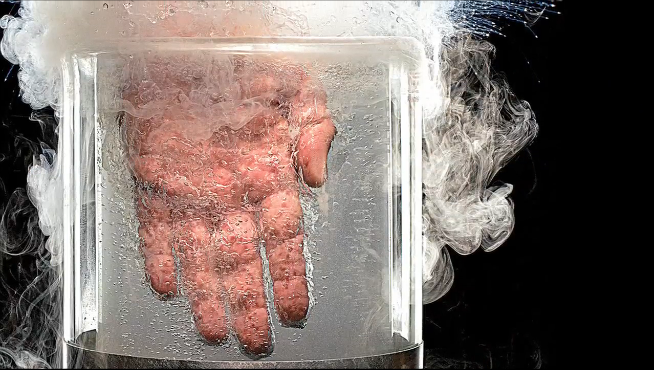Liquid Nitrogen Won’t Freeze Your Hand Immediately (But You Still Shouldn’t Try It)

If you happen to get a hold of some liquid nitrogen, your first impulse might be to submerge your hand or arm in it. You should resist that impulse. Liquid nitrogen is 346 degrees below zero. But thanks to a phenomenon called the Leidenfrost effect, for a split second it is possible.
When a liquid comes in contact with a surface that is vastly hotter than its boiling point — say, a vat of liquid nitrogen and a room temperature hand or a drop of room temperature water and a screaming-hot pan — the liquid doesn’t boil immediately. For a fraction of a second, it sits atop a thin layer of vapor. Around your hand, it forms a protective glove of steam, which insulates your skin from the nitrogen.
If you need proof of the effect, look no further than Popular Science's Theodore Gray, who decided to stick his bare hand wrist-deep in a container of liquid nitrogen, going slightly deeper and longer with each successive dunking. “The instant it starts biting into your skin, things could happen very fast,” Gray warns.
These include cold burns and, in more extreme cases, asphyxia. In 2006, Texas A&M University witnessed the astounding force generated by liquid nitrogen as it rapidly vaporizes. The devices meant to depressurize the nitrogen tanks started malfunctioning, and the ensuing pressure build-up caused an explosion that shot the tank through the ceiling, shattered a concrete beam below it, and rocked the laboratory walls off their foundation.
So, imagine what it could do to a puny human hand.
Published by Medicaldaily.com



























